
How to Use LoRa 433mhz SX1278: Examples, Pinouts, and Specs
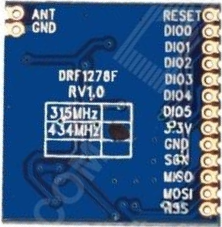
 Design with LoRa 433mhz SX1278 in Cirkit Designer
Design with LoRa 433mhz SX1278 in Cirkit DesignerIntroduction
The LoRa 433MHz SX1278 is a low-power, long-range transceiver module designed for wireless communication. It operates in the 433 MHz frequency band and utilizes LoRa (Long Range) modulation technology, which provides extended communication range, high interference immunity, and low power consumption. This makes the SX1278 an excellent choice for Internet of Things (IoT) applications, remote sensor networks, smart agriculture, and industrial automation.
Explore Projects Built with LoRa 433mhz SX1278
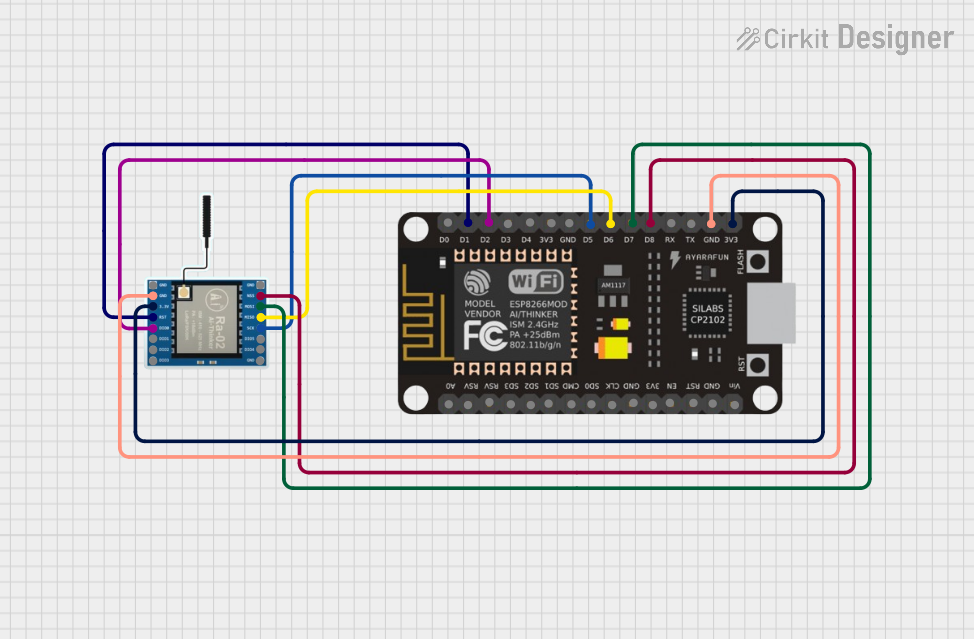
 Open Project in Cirkit Designer
Open Project in Cirkit Designer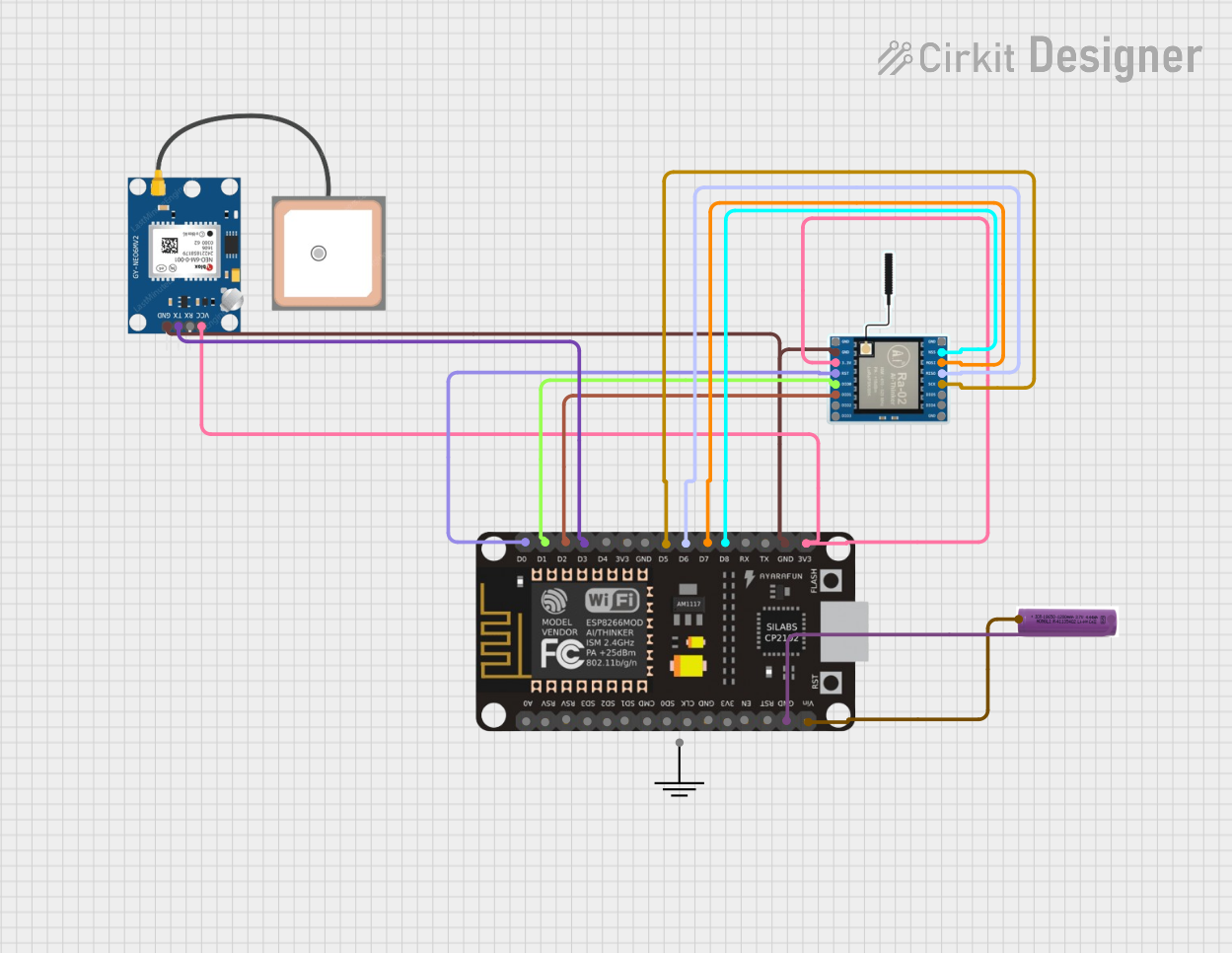
 Open Project in Cirkit Designer
Open Project in Cirkit Designer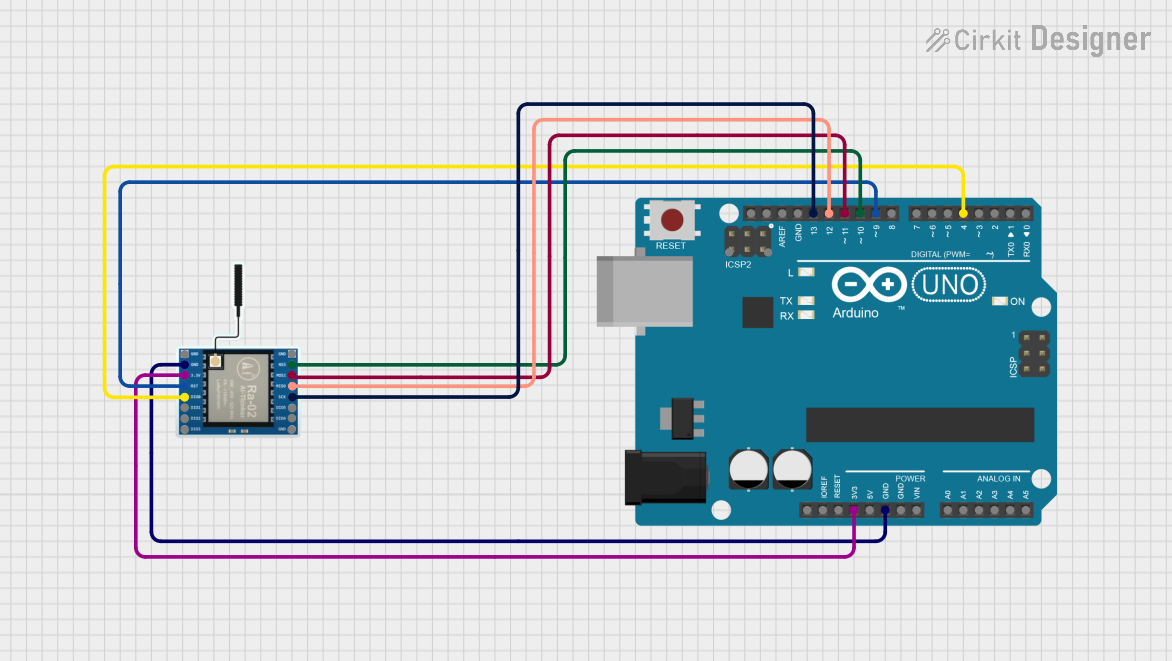
 Open Project in Cirkit Designer
Open Project in Cirkit Designer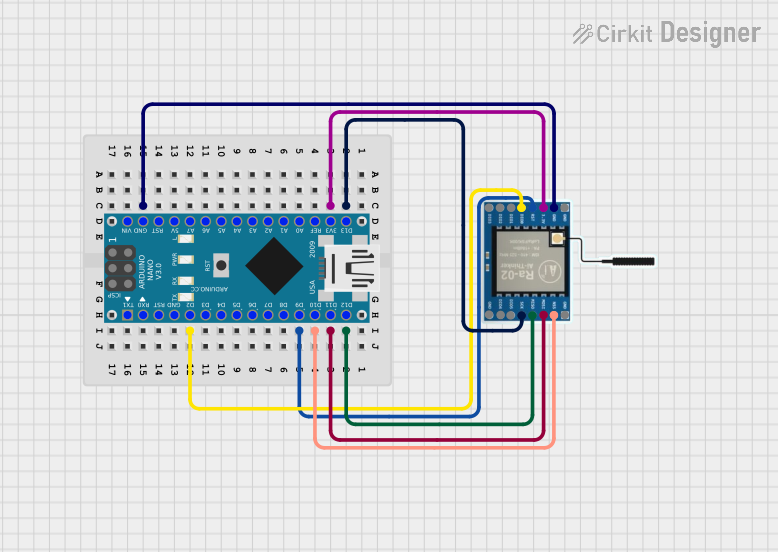
 Open Project in Cirkit Designer
Open Project in Cirkit DesignerExplore Projects Built with LoRa 433mhz SX1278

 Open Project in Cirkit Designer
Open Project in Cirkit Designer
 Open Project in Cirkit Designer
Open Project in Cirkit Designer
 Open Project in Cirkit Designer
Open Project in Cirkit Designer
 Open Project in Cirkit Designer
Open Project in Cirkit DesignerCommon Applications and Use Cases
- IoT networks for smart cities and homes
- Remote environmental monitoring (e.g., weather stations, soil sensors)
- Industrial automation and telemetry
- Smart agriculture (e.g., irrigation systems, livestock tracking)
- Asset tracking and geolocation
- Wireless alarm and security systems
Technical Specifications
The following table outlines the key technical details of the LoRa 433MHz SX1278 module:
| Parameter | Value |
|---|---|
| Frequency Range | 433 MHz |
| Modulation Technique | LoRa (FSK, GFSK, OOK also supported) |
| Output Power | Up to +20 dBm |
| Sensitivity | -148 dBm |
| Data Rate | 0.018 kbps to 37.5 kbps |
| Supply Voltage | 1.8V to 3.7V |
| Current Consumption | 10.8 mA (Rx), 120 mA (Tx at max power) |
| Communication Interface | SPI |
| Operating Temperature | -40°C to +85°C |
| Dimensions | 16 mm x 16 mm x 2 mm |
Pin Configuration and Descriptions
The SX1278 module typically has the following pinout:
| Pin | Name | Description |
|---|---|---|
| 1 | GND | Ground connection |
| 2 | 3.3V | Power supply input (1.8V to 3.7V) |
| 3 | NSS | SPI chip select (active low) |
| 4 | SCK | SPI clock input |
| 5 | MOSI | SPI data input (Master Out Slave In) |
| 6 | MISO | SPI data output (Master In Slave Out) |
| 7 | DIO0 | Digital I/O pin 0 (used for interrupts or status indication) |
| 8 | DIO1 | Digital I/O pin 1 (optional, used for advanced configurations) |
| 9 | RESET | Reset pin (active low) |
| 10 | ANT | Antenna connection (connect to a 433 MHz antenna for optimal performance) |
Usage Instructions
How to Use the SX1278 in a Circuit
- Power Supply: Connect the
3.3Vpin to a regulated 3.3V power source and theGNDpin to ground. - SPI Communication: Connect the
NSS,SCK,MOSI, andMISOpins to the corresponding SPI pins on your microcontroller. - Antenna: Attach a 433 MHz antenna to the
ANTpin for proper signal transmission and reception. - Reset: Use the
RESETpin to initialize the module during startup or when needed. - Interrupts: Use the
DIO0pin to handle interrupts for events like packet reception or transmission completion.
Important Considerations and Best Practices
- Antenna Matching: Ensure the antenna is tuned for 433 MHz to maximize range and minimize signal loss.
- Power Supply: Use a stable and noise-free power source to avoid communication issues.
- SPI Speed: Configure the SPI clock speed according to the module's specifications (typically up to 10 MHz).
- Regulatory Compliance: Ensure compliance with local regulations for the 433 MHz frequency band.
- Range Optimization: Place the module and antenna in an open area, away from obstructions and interference sources.
Example Code for Arduino UNO
Below is an example of how to use the SX1278 with an Arduino UNO using the popular LoRa library.
#include <SPI.h>
#include <LoRa.h> // Include the LoRa library
#define NSS 10 // Chip select pin
#define RESET 9 // Reset pin
#define DIO0 2 // Interrupt pin
void setup() {
Serial.begin(9600); // Initialize serial communication
while (!Serial);
Serial.println("Initializing LoRa module...");
// Initialize LoRa module
LoRa.setPins(NSS, RESET, DIO0); // Set the module's pins
if (!LoRa.begin(433E6)) { // Initialize at 433 MHz
Serial.println("LoRa initialization failed!");
while (1);
}
Serial.println("LoRa initialized successfully!");
}
void loop() {
Serial.println("Sending packet...");
LoRa.beginPacket(); // Start a new packet
LoRa.print("Hello, LoRa!"); // Add data to the packet
LoRa.endPacket(); // Send the packet
delay(5000); // Wait 5 seconds before sending again
}
Notes:
- Install the LoRa library in the Arduino IDE via the Library Manager before uploading the code.
- Adjust the
NSS,RESET, andDIO0pin definitions if using different pins on your Arduino.
Troubleshooting and FAQs
Common Issues and Solutions
LoRa Module Not Initializing
- Cause: Incorrect wiring or power supply issues.
- Solution: Double-check all connections, ensure the power supply is stable, and verify the SPI pins are correctly connected.
Poor Communication Range
- Cause: Improper antenna or interference.
- Solution: Use a properly tuned 433 MHz antenna and place the module in an open area, away from obstructions and interference sources.
No Data Received
- Cause: Mismatched frequency or settings between transmitter and receiver.
- Solution: Ensure both modules are configured to the same frequency, bandwidth, and spreading factor.
High Power Consumption
- Cause: Module operating in high-power transmission mode.
- Solution: Use low-power modes when possible and optimize the duty cycle of transmissions.
FAQs
Q: Can the SX1278 operate at other frequencies?
A: No, the SX1278 is specifically designed for the 433 MHz frequency band. For other frequencies, consider modules like the SX1276 (868/915 MHz).Q: What is the maximum range of the SX1278?
A: The range depends on environmental conditions, antenna quality, and power settings. In open areas, it can achieve up to 10 km.Q: Can I use the SX1278 with a 5V microcontroller?
A: Yes, but you will need a level shifter to safely interface the 3.3V module with 5V logic.Q: Is the SX1278 suitable for high-speed data transmission?
A: No, the SX1278 is optimized for low data rates to achieve long-range communication.